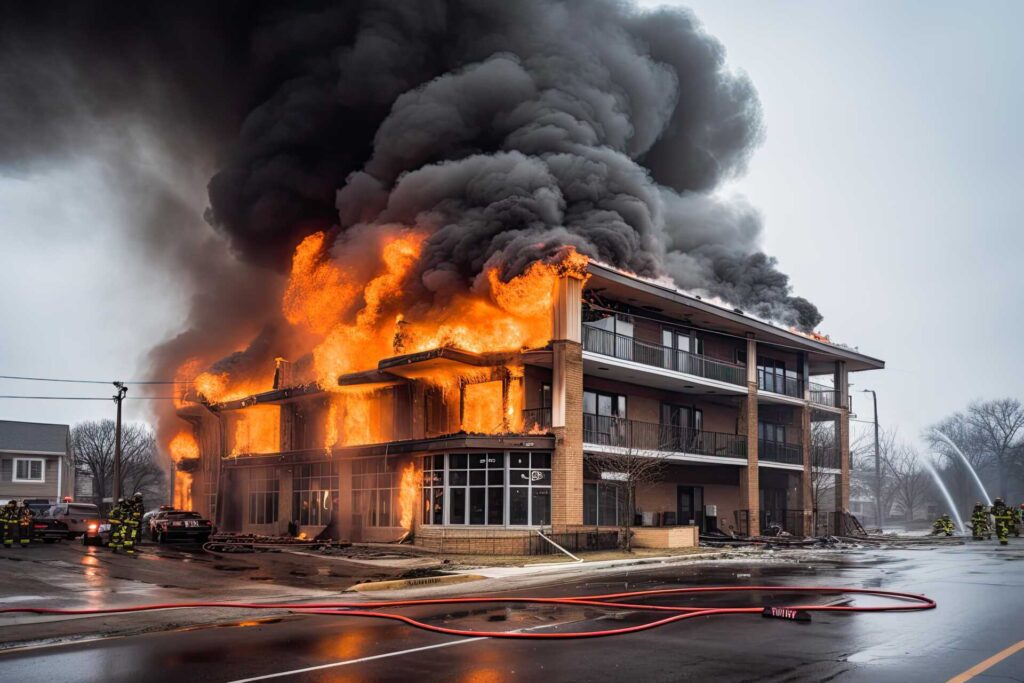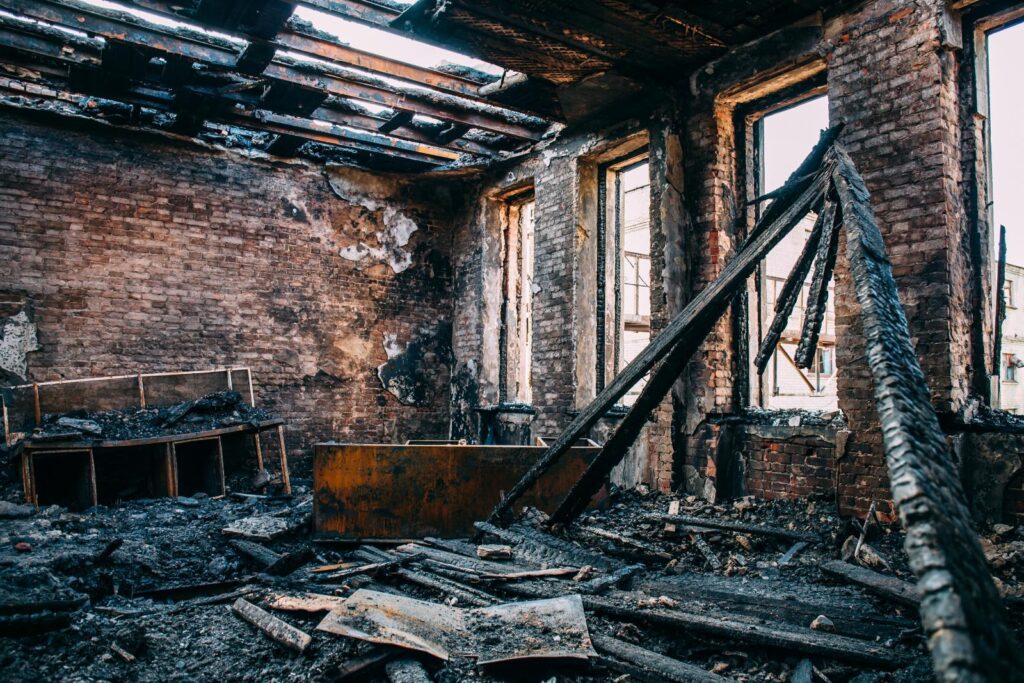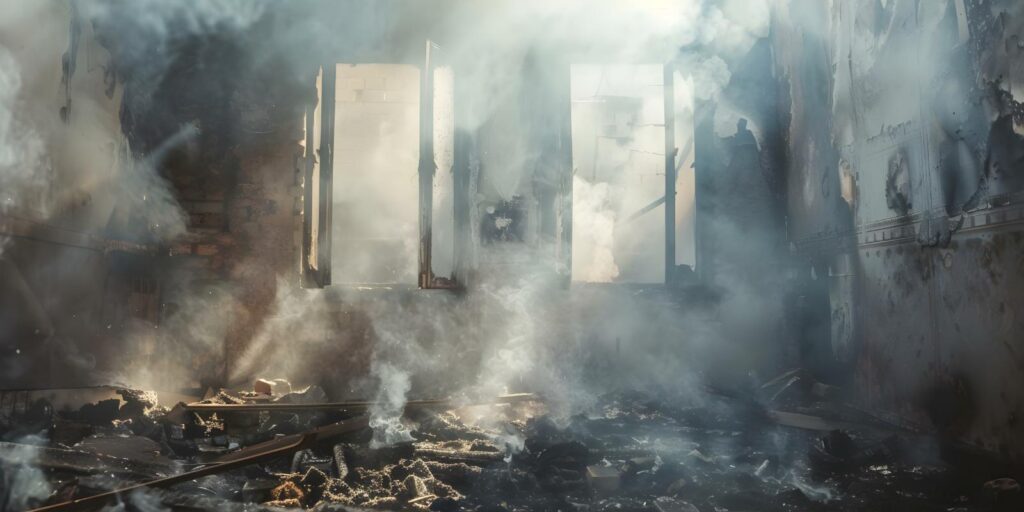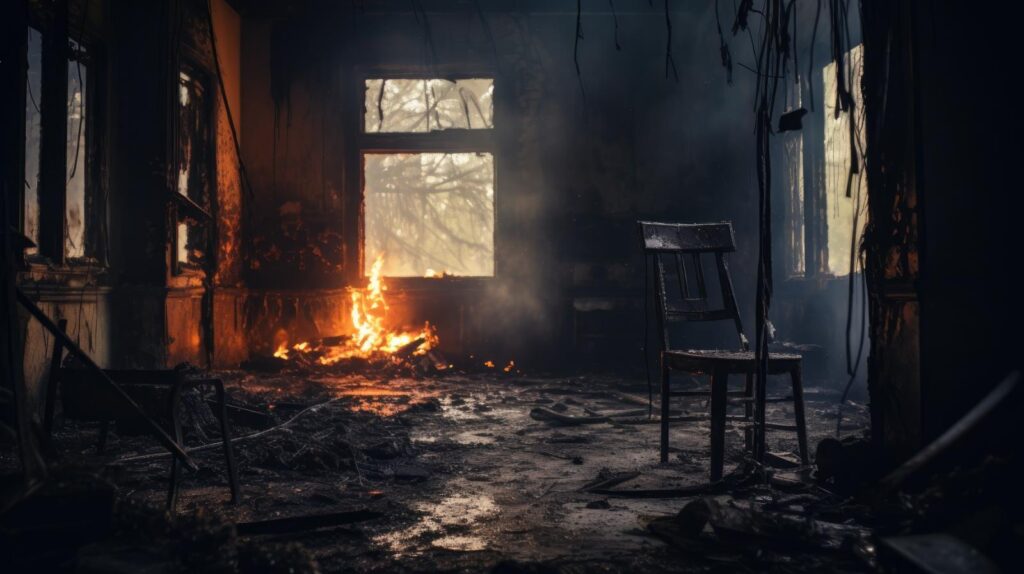
Contents
Imagine your business suffers a fire that damages crucial equipment and inventory. You might think the fire damage cleanup is straightforward, but there’s a lot more to it than just removing debris. From ensuring safety with the right precautions to effectively dealing with smoke and odors, each step is vital for a successful recovery. Understanding these top fire damage cleanup techniques can make the difference between a quick return to operations or prolonged disruption. So, what specific strategies should you be aware of to navigate this challenging situation?
Key Takeaways
- Conduct a thorough fire damage assessment to document destruction and identify structural issues for effective cleanup planning.
- Ensure safety by wearing PPE, assessing structural integrity, and maintaining proper ventilation throughout the cleanup process.
- Utilize specialized techniques for debris and water removal, employing appropriate tools and equipment to prevent injuries and promote efficiency.
- Implement smoke, soot, and odor removal strategies using HEPA vacuums, dry cleaning sponges, and professional treatments for thorough cleaning.
- Maintain organized documentation for insurance claims, tracking expenses and communicating effectively with adjusters to facilitate the claims process.
Assessing Fire Damage
When dealing with the aftermath of a fire, assessing damage is crucial to restoring your business. A comprehensive fire assessment allows you to identify the extent of destruction and prioritize necessary repairs. Start by meticulously inspecting both the interior and exterior of your property. Look for structural damage, smoke stains, and water damage from firefighting efforts. Document everything with photographs and detailed notes; this will be invaluable for insurance claims and future planning.
Next, conduct a thorough damage evaluation of your equipment, inventory, and furnishings. Many items may seem salvageable at first glance, but the hidden effects of smoke and heat can compromise their integrity. Be especially cautious with electrical systems, as they can pose long-term hazards if not assessed properly.
Engage professionals if needed, as they can provide expert insights and help you navigate the complexities of the evaluation process. Their expertise ensures that you don’t overlook critical issues that could hinder your recovery efforts.
Additionally, remember to involve your team in this process; their input can be vital in understanding the full impact of the damage on your operations and morale.
Ultimately, this fire assessment isn’t just about identifying what’s broken; it’s about laying the groundwork for rebuilding. A compassionate approach fosters a sense of community among your employees, helping everyone feel supported as you work together toward recovery.
Safety Precautions
After assessing the fire damage, the next priority is to ensure the safety of everyone involved in the cleanup process.
Fire safety is paramount during this stage, as hazardous materials and structural instability can pose significant risks.
To protect yourself and your team, you should implement the following safety precautions:
- Wear Personal Protective Equipment (PPE): Equip yourself with gloves, masks, goggles, and hard hats to minimize exposure to toxins and debris.
- Ensure Adequate Ventilation: Open windows and use fans to circulate air, reducing inhalation of harmful smoke particles.
- Assess Structural Integrity: Before entering, check for weakened walls, ceilings, or floors. If unsure, consult a structural engineer.
- Have Fire Extinguishing Equipment Ready: Keep fire extinguishers and other firefighting tools on-site to address any flare-ups quickly.
Removing Debris
When you begin removing debris after a fire, it’s crucial to first assess any structural damage to ensure safety.
Next, carefully sort through the materials to identify what can be reused, as this aids in recovery and promotes sustainability.
Finally, dispose of the debris safely and responsibly to maintain a clean and hazard-free environment for your business.
Assessing Structural Damage
Assessing structural damage begins with a thorough inspection of the area, focusing on identifying hazardous debris that can pose further risks.
This critical step ensures the safety of your team and aligns with local building codes and safety inspections. You want to prioritize the well-being of everyone involved while preparing for effective cleanup and recovery.
As you assess the damage, keep an eye out for the following:
- Cracked or sagging walls: Look for any visible signs of compromise that may indicate structural instability.
- Damaged support beams: Check for any warped or burnt beams that could jeopardize the building’s integrity.
- Roof integrity: Inspect the roof for holes or sagging that could lead to further water damage.
- Floor damage: Ensure that flooring remains stable and safe for movement, as weakened floors can pose serious hazards.
Documenting these findings will help guide your next steps in the cleanup process.
Sorting Reusable Materials
In the wake of a fire, sorting reusable materials is a crucial step that can significantly aid in the recovery process.
You’ll want to start with a thorough material evaluation to determine what can be salvaged. Look for items that, despite damage, may still hold value—like furniture, fixtures, or even structural components.
As you sift through the debris, focus on identifying salvage opportunities. Items made of metal or solid wood often withstand fire exposure better than others and can be refurbished or repurposed.
Document everything you deem salvageable, as this inventory will be vital for insurance claims and future planning.
Don’t forget to consider sentimental items as well; these can be irreplaceable and contribute to your business’s identity. Engage your team in the evaluation process, fostering a sense of belonging and teamwork during this challenging time.
By working together, you expedite recovery and strengthen your community.
Finally, ensure that you’re adhering to local regulations regarding hazardous materials, as some debris may require special handling.
This organized approach to sorting reusable materials will lay a strong foundation for your business’s recovery journey.
Safe Debris Disposal
After sorting through reusable materials, the next step is safely removing debris. Effective debris disposal is crucial for creating a safe environment for you and your team.
Begin by categorizing debris into manageable sections. This organization simplifies the cleanup process while ensuring compliance with local regulations regarding hazardous waste.
Here are some key considerations for safe debris disposal:
- Identify hazardous materials: Look for items like chemicals, batteries, and any toxic substances that require special handling.
- Separate recyclables: Prioritize debris recycling by sorting materials that can be repurposed or recycled, such as metal, wood, and concrete.
- Use proper containers: Ensure you use designated containers for hazardous waste to prevent leaks and spills during transport.
- Hire professionals: For extensive debris removal, consider hiring certified cleanup crews specializing in fire damage. They’ll handle hazardous waste safely and efficiently.
Water Extraction Techniques
Effective water extraction techniques are crucial for minimizing damage following a fire, as excess moisture can lead to mold growth and structural issues. To tackle this challenge, you’ll need to employ proper water removal methods with specialized extraction equipment. Start by assessing the extent of the water damage and identifying the source of the moisture. This will help you determine the most effective approach for your specific situation.
Begin with the use of high-powered pumps for large volumes of standing water. These machines can quickly and efficiently remove significant amounts of water, helping to prevent further damage. For smaller areas or residual moisture, consider using wet/dry vacuums. They’re particularly useful for tight spaces where larger equipment may not fit.
Don’t forget about the importance of dehumidifiers and air movers. After the bulk of the water has been extracted, these tools can help lower humidity levels and promote faster drying. Place dehumidifiers strategically around the affected areas to absorb excess moisture from the air, while air movers circulate the air, helping to speed up the drying process.
Throughout this process, it’s essential to monitor moisture levels using moisture meters. This ensures you’ve effectively removed water and prevents hidden pockets of moisture that could encourage mold growth.
Smoke and Soot Removal
Removing smoke and soot from your business premises is a critical step in restoring a safe and healthy environment following a fire.
These residues can pose serious health risks and cause damage to your property if not addressed promptly. You’ll want to act quickly, ensuring that your space is clean and welcoming for your employees and customers.
Here are some effective techniques for smoke removal and soot cleaning:
- Ventilation: Open windows and doors to allow fresh air to circulate, helping to dissipate smoke particles.
- Dry Cleaning Sponges: Use specialized sponges designed for soot removal. These sponges absorb soot without smearing it, making them ideal for delicate surfaces.
- Chemical Cleaners: Utilize smoke removal products specifically formulated to break down and lift soot from various materials. Always follow the manufacturer’s instructions.
- Professional Assistance: Sometimes, it’s best to call in experts who’ve got the right equipment and training to handle extensive smoke and soot damage.
Odor Neutralization Methods
Odor elimination is a vital component of fire damage restoration, as lingering smells can create an unwelcoming atmosphere for both employees and customers. To effectively neutralize these odors, you’ll want to consider advanced methods like ozone treatment and thermal fogging.
Ozone treatment involves the use of ozone gas, which is highly effective at breaking down odor-causing compounds. By generating ozone in your space, you can penetrate porous materials and eliminate odors at their source.
It’s crucial to remember, though, that ozone can be harmful to humans and pets, so you’ll need to ensure the area is unoccupied during the treatment. After a few hours, the ozone dissipates, leaving your environment fresh and inviting.
On the other hand, thermal fogging uses a heated fog to deliver deodorizing agents deep into materials like carpets, upholstery, and walls. This method replicates the way smoke permeates surfaces, allowing the deodorizer to reach hidden odors effectively.
It’s particularly useful for tackling stubborn smells that may be trapped in hard-to-reach places. Both methods require a careful approach, and it’s advisable to consult with professionals who can assess your specific situation.
Structural Repair Strategies
After a fire, assessing structural integrity is your first priority to ensure safety and stability.
You’ll need to replace any damaged materials to restore functionality, while also considering fire-resistant upgrades to enhance future resilience.
Assessing Structural Integrity
Assessing structural integrity after a fire is crucial for ensuring the safety of your business and its occupants.
You’ll want to perform a thorough structural evaluation to identify any damage that may compromise safety. An integrity assessment helps you determine the extent of repairs needed and ensures your building can support its intended use moving forward.
Consider the following key steps in your assessment:
- Visual Inspection: Look for visible signs of damage, such as cracks, warping, or sagging beams.
- Load-Bearing Elements: Assess critical components like walls, columns, and foundations to ensure they haven’t been compromised.
- Consult Professionals: Engage licensed structural engineers who can provide expert evaluations and recommendations.
- Document Findings: Keep detailed records of assessments, including photos and reports, for insurance and future reference.
Replacing Damaged Materials
Once you’ve identified the damaged materials, it’s time to replace them to restore the structural integrity of your business. Effective material selection is crucial in this phase, as it directly impacts both the safety and aesthetics of your space. Prioritize materials that meet your building codes and consider their durability against future incidents.
Here’s a quick overview to guide your material choices:
| Material Type | Replacement Costs |
|---|---|
| Wood Beams | $5 – $15 per linear foot |
| Drywall | $1 – $3 per square foot |
| Insulation | $0.50 – $2 per square foot |
Evaluate the costs against your budget while keeping in mind the long-term benefits of investing in quality materials. Choosing the right materials helps in rebuilding and fosters a sense of belonging and safety for everyone who works in or visits your business. Remember, though replacement costs may seem daunting, the value of a secure, well-constructed environment far outweighs the temporary financial burden. Your commitment to restoring your space will resonate with your team and customers alike.
Fire-Resistant Upgrades
Regularly updating your business’s structural components with fire-resistant upgrades can significantly enhance safety and minimize potential damage from future incidents.
Investing in fire-resistant materials and insulation upgrades protects your assets and fosters a sense of security for your employees and customers.
Here are some effective strategies to consider:
- Install fire-resistant doors and windows: These barriers can slow down the spread of flames and smoke, providing critical time for evacuation.
- Use fire-retardant coatings: Applying these to wooden structures can help reduce their combustibility, offering an extra layer of protection.
- Upgrade insulation: Opt for non-combustible insulation materials, such as fiberglass, which resist flames and can help maintain temperature stability.
- Implement fire-resistant landscaping: Create defensible space around your property with fire-resistant plants and materials, reducing the risk of fire spreading to your building.
Documenting the Cleanup Process
While you focus on restoring your business after a fire, documenting the cleanup process is crucial for both insurance claims and future prevention. Effective cleanup documentation safeguards your interests and ensures that you have a comprehensive record of the steps taken to return your business to its former state.
Start by creating a detailed log of every action you take during the cleanup. This should include dates, times, and descriptions of tasks completed, as well as any materials used. Such meticulous records will serve as important evidence when you file claims.
Alongside written documentation, photographic records are invaluable. Capture images of the fire damage, the cleanup in progress, and the final results. Make sure to take wide-angle shots to show the overall impact, as well as close-ups that highlight specific damage. This visual evidence can significantly bolster your case with insurance companies and demonstrate the extent of your efforts.
Additionally, consider documenting any conversations with contractors or specialists you engage for the cleanup. Keep notes on their recommendations and any costs incurred; this information will be essential for tracking expenses and potential reimbursements.
Working With Insurance Adjusters
After you’ve meticulously documented the cleanup process, the next step involves navigating your interactions with insurance adjusters. Working with them can feel overwhelming, but understanding their role and preparing effectively can make a significant difference in your insurance claim.
First, it’s crucial to approach these conversations with a clear strategy. Here are some negotiation tactics to consider:
- Be Organized: Present your documentation systematically. Include photographs, receipts, and your detailed cleanup log.
- Know Your Policy: Familiarize yourself with your insurance policy. Understanding your coverage can empower your discussions.
- Communicate Clearly: Articulate your needs and the specifics of your claim without ambiguity. This helps to build trust and transparency.
- Follow Up: Regularly check in with the adjuster. Persistence shows your commitment to resolving the claim efficiently.
Remember, adjusters are there to assess your situation, but they also work within specific guidelines and budgets. Your documentation and preparedness can significantly influence their decision-making process.
By establishing a cooperative relationship, you can facilitate smoother negotiations and increase the likelihood of a favorable outcome.
Lastly, don’t hesitate to seek professional help if negotiations become challenging. Adjusters can sometimes be rigid, and having an advocate can provide you with the support you need.
Navigating this process can be daunting, but with the right approach, you’ll be well-equipped to manage your insurance claim effectively.
Wrap-Up
In the aftermath of a fire, swift and effective cleanup is crucial for your business’s recovery. By following these techniques, you can ensure a thorough restoration process that protects your property and nurtures your peace of mind. Remember, every step you take is a step towards rebuilding what was lost, transforming adversity into opportunity. With careful planning and collaboration with professionals, you’re not just cleaning up; you’re laying the foundation for a stronger future.



